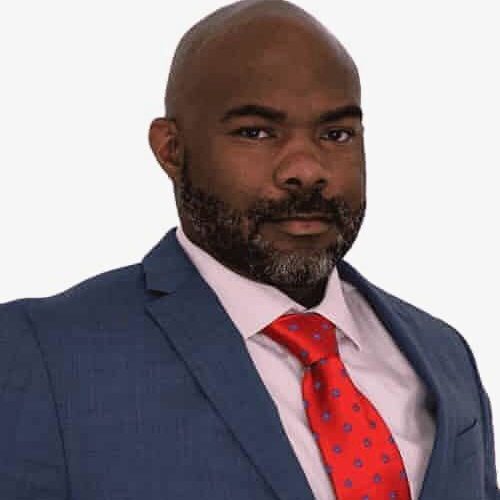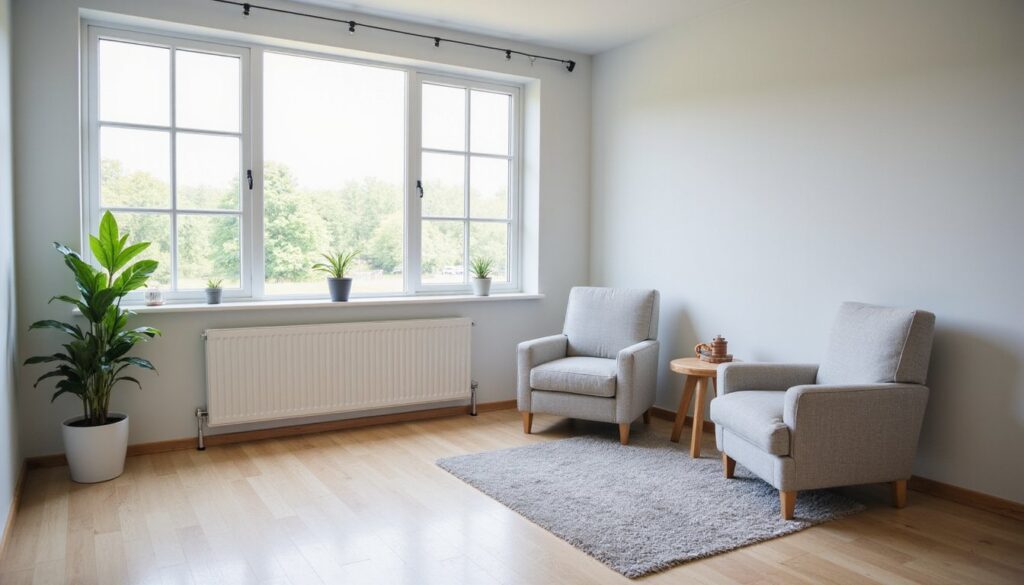Average addiction rehab costs in 2025 will hit $50,469 for standard 30-day inpatient programs, while outpatient care runs $8,000-$8,386 for a full course. You’ll face initial detox expenses of $250-$2,400 per day, plus admission fees around $3,000-$4,000. Insurance typically covers 60% of costs, with higher copays for inpatient care. Luxury facilities command a 50-100% premium over standard rates. These baseline figures represent just the starting point of understanding your total investment in recovery.
Breaking Down Core Treatment Program Expenses

While addiction treatment costs vary considerably across program types, core rehabilitation expenses in 2025 center primarily around the intensity and duration of care. You’ll find basic treatment modalities ranging from $1,000 for monthly outpatient care to $30,000 for standard 30-day inpatient programs. Medical detoxification services typically add approximately $1,750 to the total cost. Many individuals find that health insurance coverage significantly reduces out-of-pocket expenses. Financial forecasting shows intensive outpatient programs averaging $3,100-$10,000 per month, while medication-assisted treatment adds $100-$150 monthly for prescribed medications.
For residential programs, you’re looking at base costs between $5,300 and $80,000, with costs adjusting based on length of stay. Extended inpatient treatment can exceed $100,000 at premium facilities. The national average for residential treatment per person stands at $50,469 when adjusted for inflation, helping you benchmark typical expenses against various treatment options. Only 443 facilities nationwide currently offer treatment at no cost to all clients.
The Real Cost of Detox and Initial Care
Before entering any rehabilitation program, you’ll face considerable detox costs that can range from $250 to $2,400 per day depending on the level of medical supervision required. Your detox process typically lasts 3-7 days, with admission fees adding $3,000-$4,000 for initial evaluations. Sliding-scale programs are available to help cover up to 15% of costs for qualifying households. Medical staff supervision is provided around the clock during the detoxification process.
Care coordination costs vary by location, with urban facilities charging 20-30% more than rural centers. Many high-end facilities offer luxury amenities that drive costs above $20,000 monthly. You’ll find hospital-based detox programs cost 3-4 times more than freestanding clinics, though they often require shorter stays. Insurance typically covers 60% of expenses, leaving you responsible for copays of $200-$500 and 50-70% coinsurance for outpatient services. Substance-specific factors impact costs considerably; opioid or benzodiazepine withdrawal requires more intensive medical oversight, increasing daily rates by 30-50%.
Comparing Inpatient vs. Outpatient Financial Investment

When you’re weighing treatment options, you’ll find inpatient programs cost markedly more at $50,469-$56,654 for 30+ days compared to outpatient’s $8,000-$8,386 for a full course. Your length of stay directly affects total expenses, with 60-90 day inpatient programs ranging from $12,000-$60,000, while outpatient programs typically span 6-12 months with flexible scheduling that allows continued employment. Insurance coverage can considerably reduce out-of-pocket costs for both programs, though you’ll generally face higher copays and deductibles for inpatient care due to its intensive nature and residential component. All programs include essential detox services included, making the initial cost more comprehensive for those requiring medical supervision during withdrawal. For those seeking premium care options, luxury rehab facilities can cost between $30,000 to $100,000+ for enhanced amenities and specialized treatment approaches. Most facilities offer financing options to ensure budget constraints don’t prevent access to necessary treatment.
Cost Differences By Program
The financial gap between inpatient and outpatient addiction treatment programs reveals considerable cost differences in 2025. Program pricing varies greatly between treatment types, with inpatient care requiring a more substantial investment. You’ll find standard 30-day inpatient programs ranging from $6,000 to $20,000, while luxury facilities can charge up to $80,000 for the same duration. Research shows that nonprofit facilities average just $395 per day for residential treatment.
- Outpatient detox costs remain more affordable at $250-$800 daily
- Inpatient programs with MAT add $1,000-$5,000 monthly to base costs
- Annual outpatient methadone treatment averages $7,451 per person
- Luxury inpatient facilities command 50-100% premium over standard pricing
When comparing options, consider that outpatient programs often qualify for better insurance coverage, potentially reducing your out-of-pocket expenses to minimal amounts while still providing essential recovery support.
Duration Impacts Total Expense
Understanding duration’s impact on addiction treatment reveals stark financial contrasts between inpatient and outpatient programs in 2025. While you’ll find 30-day inpatient programs ranging from $6,000-$30,000, treatment duration beyond 90 days can triple your costs to $18,000-$90,000+. Many individuals explore insurance coverage through providers like United Healthcare and Blue Cross Blue Shield to help manage these expenses.
In comparison, outpatient care offers more flexible cost implications. A 3-month outpatient program costs $1,450-$11,000, but extending to 6+ months increases expenses to $2,900-$22,000+. Daily rates highlight this disparity: inpatient facilities charge $200-$1,000 per day, while outpatient intensive programs run $100-$333 daily. Some facilities may temporarily restrict access to their cost information websites during system updates. You’ll notice front-loaded costs in inpatient settings versus outpatient’s distributed payment structure. However, extended outpatient treatment can eventually accumulate costs approaching inpatient totals, especially when including medication-assisted treatment at $50-$200 daily. Sliding-scale fees can significantly reduce these costs for low-income families seeking either treatment option.
Insurance Coverage Comparison
Insurance coverage dramatically reshapes your financial commitment between inpatient and outpatient addiction treatment in 2025. When comparing insurance plan options, you’ll find significant coverage limitations between Medicare, Medicaid, and private insurers. Medicare Part A covers inpatient stays but requires prior authorization, while Part B handles outpatient services with lower cost-sharing. Starting in 2025, insurers must provide equal treatment limits between behavioral health and medical care services. Blue Cross Blue Shield offers extensive coverage for both inpatient and outpatient addiction treatment programs.
- Private insurance enforces stricter prior authorization for inpatient care, with higher deductibles compared to outpatient copays
- Medicaid offers the most extensive coverage, including support services and dual diagnosis treatment
- Medicare’s new $2,000 annual cap on Part D medication coverage affects MAT costs
- Major insurers like UnitedHealthcare and Cigna prioritize different treatment approaches, from detox services to intensive outpatient programs
Your out-of-pocket costs will vary substantially based on your chosen insurance provider and treatment setting. Nearly 94% of Americans who need substance use disorder treatment don’t seek it due to concerns about costs, making insurance coverage understanding crucial for accessing care.
Geographic Price Variations Across Treatment Centers

Across the United States, addiction treatment costs vary dramatically based on geographic location, with urban facilities charging upwards of $739 per day compared to rural centers averaging $200-400 daily. These geographic disparities stem from differences in operational costs, available services, and local market competition.
Regional pricing reflects the treatment types offered, with dual diagnosis programs and holistic therapies driving up costs in metropolitan areas. You’ll find luxury facilities concentrated in urban regions, offering intensive therapeutic options that can exceed $20,000 monthly. Rural treatment centers typically provide standard care at lower rates, though limited competition may affect pricing in isolated areas.
The availability of specialized mental health services and state-specific funding programs also influences costs, with some areas offering more extensive care packages that integrate multiple treatment modalities.
Insurance Coverage and Payment Options Explained
While geographic location shapes treatment costs, your ability to afford care largely depends on insurance coverage and payment options. Insurance complexities vary greatly across plan types, with Bronze plans covering 60% of costs and Platinum plans covering 90%. When facing payment challenges, you’ll find multiple coverage options:
- Private insurance acceptance at 74.4% of facilities, with ACA plans offering tiered coverage levels and income-based tax credits
- Medicaid coverage at 70.7% of centers, plus Medicare acceptance at 42% of facilities
- Cost-sharing reductions for Silver Plan holders earning below 2.5x the federal poverty level
- Self-pay options available at 90.4% of treatment centers
Your out-of-pocket expenses will vary based on your chosen plan’s metal tier, with higher tiers typically offering lower deductibles but higher monthly premiums. Income-based assistance programs can greatly reduce your costs through tax credits and reduced cost-sharing.
Hidden Fees and Additional Service Charges
While your initial treatment plan may outline core services, you’ll likely encounter supplementary charges for facility upkeep, amenities, and specialized programs ranging from $50-$200 per day. Insurance coverage gaps can result in unexpected out-of-pocket expenses, particularly when treatment extends beyond pre-approved timeframes or requires specialized medications not covered by your plan. You’ll need to factor in potential add-on therapeutic services like acupuncture ($75-150 per session), equine therapy ($150-300 per session), or specialized nutrition plans ($200-400 per week) that aren’t typically included in base treatment costs.
Unexpected Facility Maintenance Charges
Despite standardized treatment costs being the primary focus, rehabilitation facilities often impose unexpected maintenance charges and hidden fees that can greatly impact your total expenses. Facility maintenance costs vary considerably by location, with high-cost areas like California typically charging more for upkeep and services. You’ll need to carefully review your agreement for these potential hidden charges that aren’t included in standard treatment packages.
- Administrative maintenance fees can range from $3,000-$4,000 for initial processing and facility upkeep
- Luxury facility maintenance charges may add 15-20% to your base costs, particularly in private accommodations
- Location-based facility fees in premium areas often include additional maintenance surcharges
- Specialized medical equipment maintenance costs might be passed on through separate billing structures
In total, these unexpected expenses could increase your overall treatment costs by 25-30%.
Insurance Coverage Gaps
Understanding insurance coverage gaps can dramatically impact your rehabilitation costs, with hidden fees and additional service charges often catching patients off guard. You’ll encounter significant insurance loopholes, including higher out-of-network charges and stringent prior authorization requirements that can delay treatment and increase costs.
Coverage limitations often manifest through state-specific variations, with Medicaid block grants affecting treatment eligibility and narrow networks restricting provider choice. You’ll face potential barriers like annual caps on counseling sessions, exclusions for non-clinical support services, and lifetime coverage caps despite parity mandates. Additional costs may include documentation fees, psychological testing charges, and outpatient program registration fees not covered by basic copays. Be prepared for reimbursement disparities between Medicaid and private pay, particularly in non-expansion states where network adequacy issues persist.
Extra Treatment Add-Ons
Beyond the base treatment costs, you’ll encounter numerous additional charges that can greatly increase your total rehabilitation expenses by 25-40%. Treatment upgrades and service enhancements frequently catch patients off-guard with unexpected charges that insurance typically won’t cover.
- Premium accommodations in private or resort-style facilities can increase your costs by up to 30%, particularly in desirable urban or coastal locations
- Specialized therapeutic interventions like EMDR, trauma-focused therapy, and family counseling sessions often require separate billing beyond standard treatment packages
- Additional therapies such as acupuncture, mindfulness retreats, and equine therapy carry substantial hidden costs not included in base programs
- Extended stays beyond 30 days, coupled with aftercare coordination and specialized medication needs, can trigger insurance pitfalls and significant out-of-pocket expenses
Luxury vs. Standard Rehabilitation Cost Analysis
While both luxury and standard rehabilitation programs aim to treat addiction, their cost structures differ markedly. You’ll find luxury 30-day programs starting at $20,000+, compared to standard programs averaging $13,475. The cost disparity reflects significant differences in luxury amenities, including private suites, gourmet dining, and specialized therapies like equine treatment.
Treatment duration impacts costs substantially, with extended 60-90 day luxury stays exceeding $60,000, while standard programs range from $12,000-$60,000. Daily rates highlight this gap: luxury facilities charge up to $739+ in urban areas, versus $500-$650 for standard care. Insurance coverage varies too standard programs typically secure 60% coverage through private insurance, while luxury options often require substantial out-of-pocket payments. Staff-to-patient ratios and specialized services contribute to this price differential.
Long-term Financial Planning for Recovery Success
Successful long-term recovery requires a robust financial strategy that extends well beyond initial rehabilitation costs. Your path to financial wellness starts with implementing proven budgeting strategies and establishing emergency funds to prevent relapse triggers from financial stress.
Financial stability is a cornerstone of lasting recovery, protecting against stress-induced relapse through smart planning and disciplined money management.
- Build a $500-$1,000 emergency fund through automated daily savings of $5-$10
- Prioritize debt repayment focusing on high-interest obligations while maintaining credit utilization under 30%
- Leverage specialized financial counselors who understand addiction recovery challenges
- Use digital tools like YNAB or Mint to track spending and optimize your budget
Cost-Saving Strategies and Financial Assistance Programs
Managing rehabilitation costs effectively requires exploring multiple financial assistance programs and cost-saving strategies that can reduce your out-of-pocket expenses by 40-70%. By leveraging community-based treatment centers, negotiating payment terms, and applying for nonprofit scholarships, you’ll maximize your cost sharing options. Intensive outpatient programs often provide comparable care at considerably lower costs than residential treatment.
You’ll find substantial savings through supplemental support resources, including housing assistance programs, peer support networks, and job training initiatives. Additionally, many treatment centers offer legal aid services and educational resources to support your recovery journey. Combining multiple financial assistance programs, such as Medicaid coverage with sliding scale fees or SAMHSA grants with nonprofit scholarships, creates an extensive cost management strategy that makes treatment more accessible and sustainable.
Frequently Asked Questions
How Do Addiction Treatment Costs Compare Between Different Substance Dependencies?
You’ll find that substance dependency costs vary considerably based on the type of addiction. While alcohol detox runs $500-$3,000, opioid treatment is substantially higher due to medication requirements, costing $1,000-$5,000 monthly. Treatment duration variations also impact expenses, with standard 30-day programs ranging from $6,000-$20,000, while extended residential care averages $50,469 per person. Co-occurring disorders and luxury facilities can push costs even higher, exceeding $80,000.
What Percentage of Patients Typically Require Multiple Rounds of Rehabilitation?
Based on the data, you’ll find that 58% of patients don’t complete their initial treatment program, with many requiring multiple attempts. Considering relapse rates of 24-30% among even successful program completers within 9 months, you can expect approximately half of all patients to need additional rehabilitation rounds. Treatment duration considerably impacts outcomes; you’re more likely to achieve lasting recovery with programs lasting 12+ months, though multiple interventions are often necessary throughout recovery.
Do Evening and Weekend Treatment Programs Cost More Than Regular Schedules?
Yes, you’ll typically find higher pricing for evening and weekend treatment programs due to increased staffing costs. These specialized schedules require facilities to maintain additional staff during non-standard hours, which directly impacts the program’s overall expenses. While exact weekend rates vary by facility, you can expect to pay 15-25% more compared to standard daytime programs. Evening pricing also tends to run higher as facilities must account for extended operational hours and staff overtime.
How Much Do Specialized Dual Diagnosis Treatment Programs Increase Overall Costs?
You’ll typically see a 30-50% increase in overall costs when choosing specialized dual diagnosis treatment programs compared to standard addiction treatment. These programs require more intensive care, with specialized services adding $500-1,000 per week to base costs. Your treatment duration often extends to 60-90 days instead of the standard 30 days, potentially pushing total costs from $12,000 to $60,000+. The higher expenses reflect dual-certified staff and integrated therapy approaches.
What Are the Average Annual Maintenance Costs After Completing Initial Rehabilitation?
You’ll need to budget for several ongoing maintenance costs after completing initial rehab. While exact figures aren’t available in current data, your aftercare programs typically include regular therapy sessions, medication management, and support group participation. Depending on your treatment plan, you can expect costs for outpatient therapy visits, prescription medications, and periodic medical monitoring. The intensity of your ongoing therapy needs will greatly influence your annual maintenance expenses.











